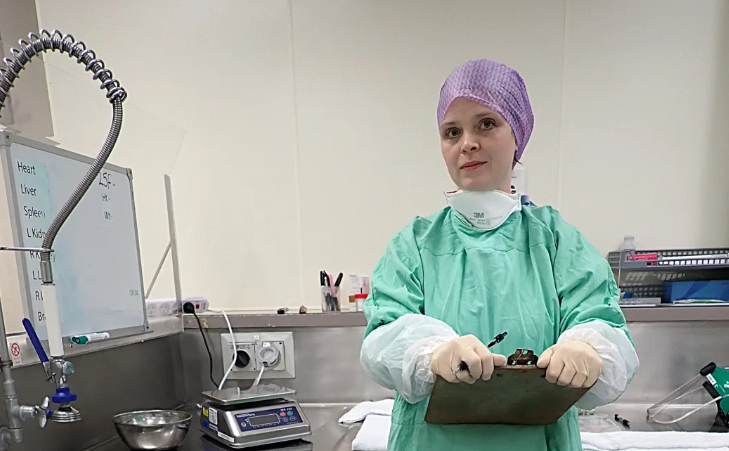
A forensic pathologist in Christchurch says a lot of people have misconceptions about her job.
Dr Leslie Anderson is a clinical director and forensic pathologist with Forensic Pathology South Island.
She has been working in the field for the past six years, and believes some people can have the wrong idea about her work.
"Forensic pathologists are medical doctors, first and foremost," she told RNZ.
"We understand the human body and how it works, and we do an additional five years of training in autopsy and death investigation."
Anderson said they helped to protect the public.
"We are the last doctors that a person is going to see, and it's their chance to tell us their story about what happened to them," she said.
"Whether that's, they were in a car crash that could've been prevented, or all the way up to somebody who has been murdered by someone, we can help tell that story and hopefully prevent those kinds of deaths in other people."
It was then up to the coroner to make recommendations based on the pathologist's investigations, Anderson said.
The two roles were quite different.
"We do autopsies mostly daily," Anderson said.
"In Christchurch we mostly do cases every day, usually at least one or two, but only about a third to half of our time is spent actually examining the bodies, a lot of our time is spent providing advice to the police, sometimes we go to scenes of death to help them figure out whether or not something might be a homicide."
She said that included figuring out how long a person had been dead, and what weapons may have been used if it had been a homicide.
She was also called in when people found bones on beaches or in their backyards, Anderson said.
"We provide advice to the coroners about whether or not they need to investigate a death, or maybe it's natural and there's an identifiable cause, so it would be appropriate for the doctor to sign a death certificate.
"We're experts in interpreting post mortem changes... as well as injuries and natural disease, and then figuring out how all of our findings fit with the circumstances around the death in order to be able to figure out why that person died, and answer some of the medical legal questions around the death."
Anderson said performing autopsies could sometimes be confronting.
"We do have to compartmentalise to some degree, and look at it as a doctor, and try and be objective, and not become emotionally involved," she said.
"But we are human, and of course we recognise that the person examining is a human, and that is our patient and we care very much about that person and speaking on their behalf."
Anderson said there were many services in place for staff to maintain their mental health, such as access to counsellors trained in trauma.
She said she had her own hobbies to take her mind off of work.
"I have discovered that I really enjoy gardening," Anderson said.
"I find that very peaceful and relaxing, and it's nice because it's also productive because I get food out of it, and I've got a couple of backyard chickens who like to help me. I also have a young son and husband who I like spending time with."
Anderson said she enjoyed getting out in nature, describing it as life-affirming.
Meanwhile her job came with responsibilities.
"There's only one chance to get answers about how someone has died, because once that body has been buried or cremated, you can't get those answers any more," she said.
"There's a certain amount of pressure to that, because we do have to think about all of the possibilities there could be and make sure that we're doing all of the appropriate testing and examinations that are necessary."
Some of the things people got wrong about forensic pathology, Anderson said, were the conditions in which it was performed.
"A lot of people envision us doing examinations of bodies in dimly lit, creepy mortuaries, and things like that," she said.
"What we do is a highly specialised medical procedure, so we do the exams in very bright, open spaces that are very similar to surgical suites."
"I think a lot of people think that we destroy a body when we examine them, and that's absolutely not true, if a body was viewable before an autopsy it will absolutely be viewable afterwards."
Anderson said they took very great care not to alter the outside of the body unless they absolutely had to.
She said the field itself had been slow to change over the years, but the use of post-mortem imaging was becoming more common.
Anderson's colleague Dr Andrew Gilkison was innovating the use imaging techniques after death to help find answers without having to do a full autopsy.
"I think that's going to be explored much more in the coming years, and I think will be a much bigger part of death investigation moving forward," Anderson said.














